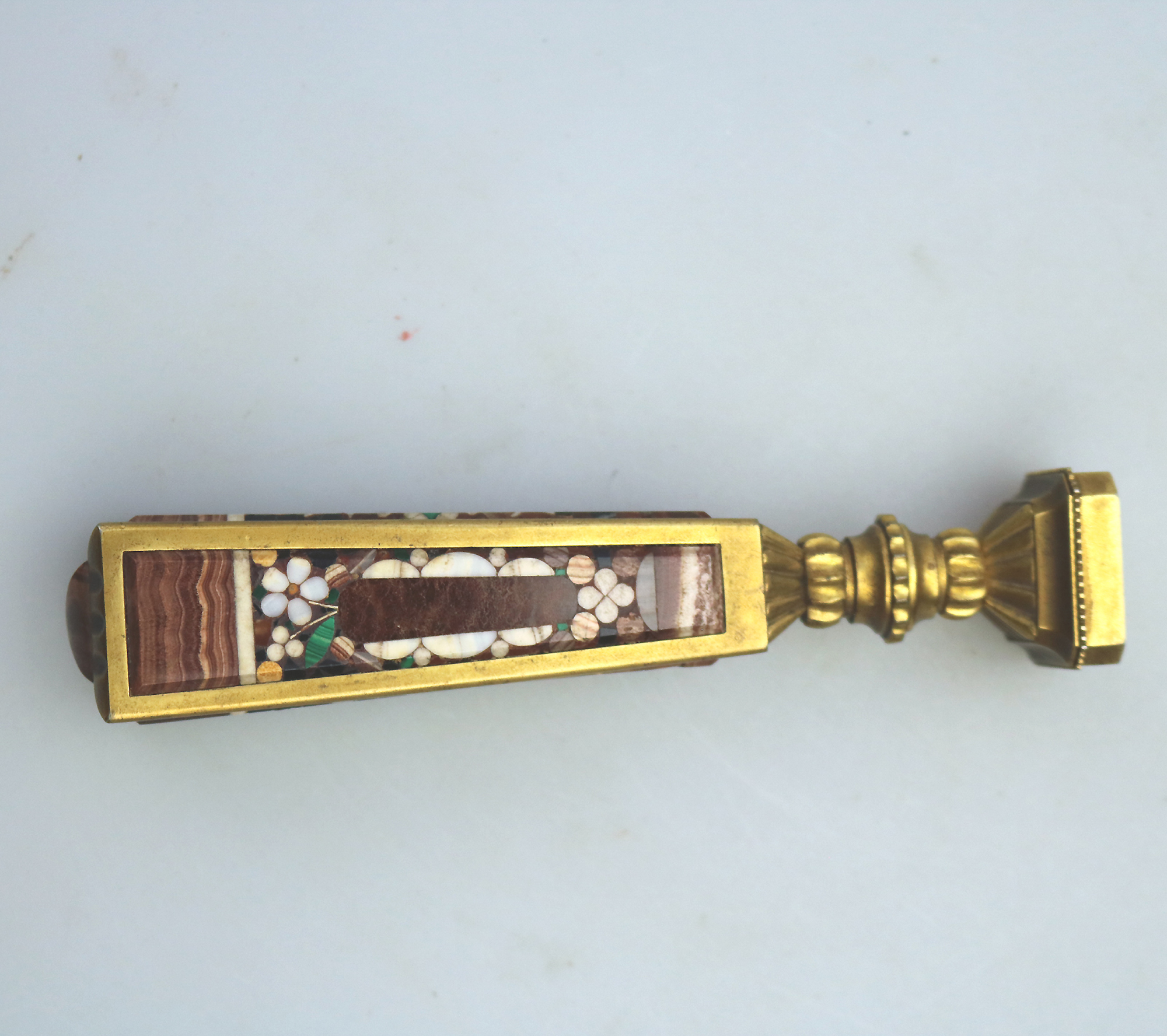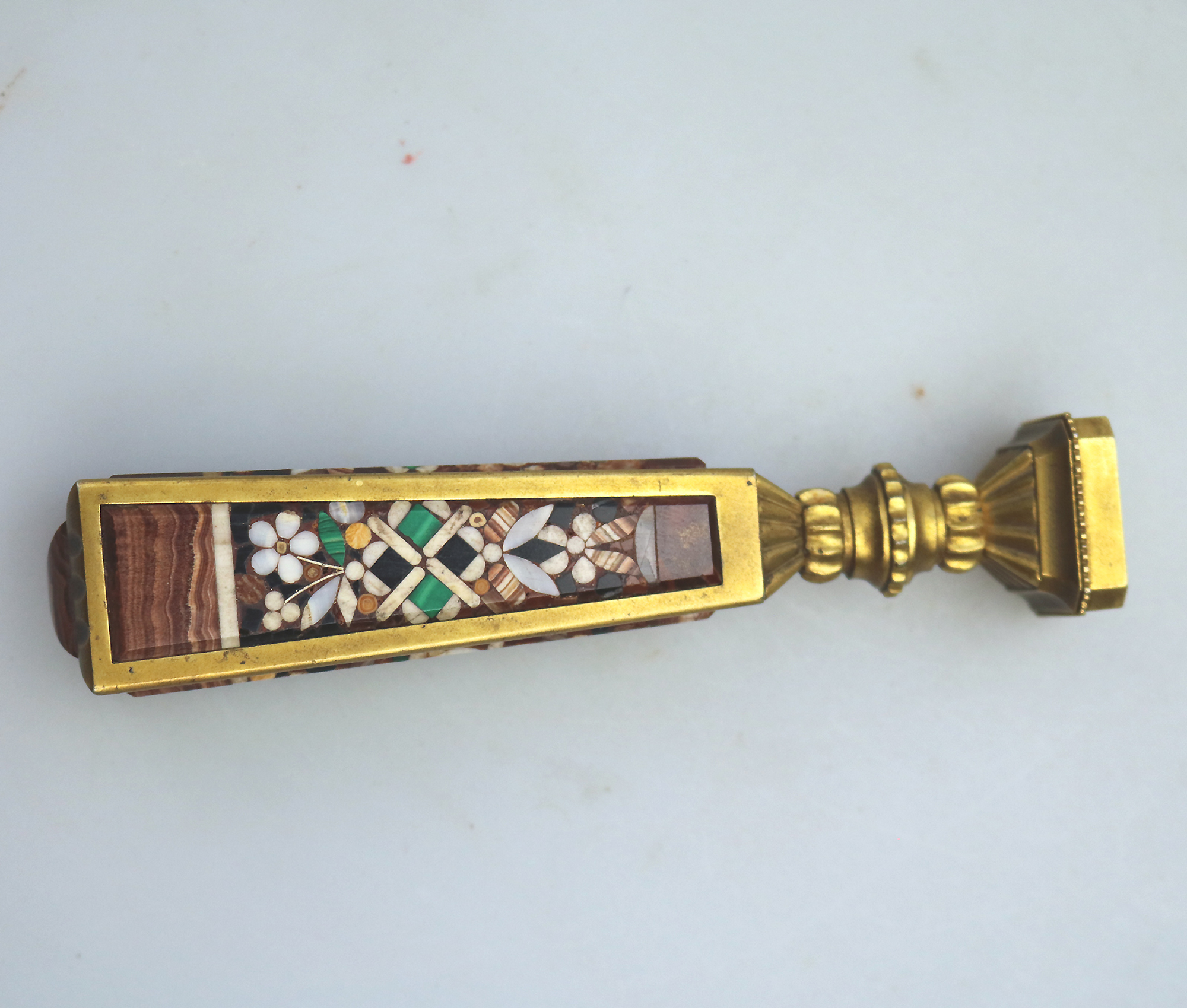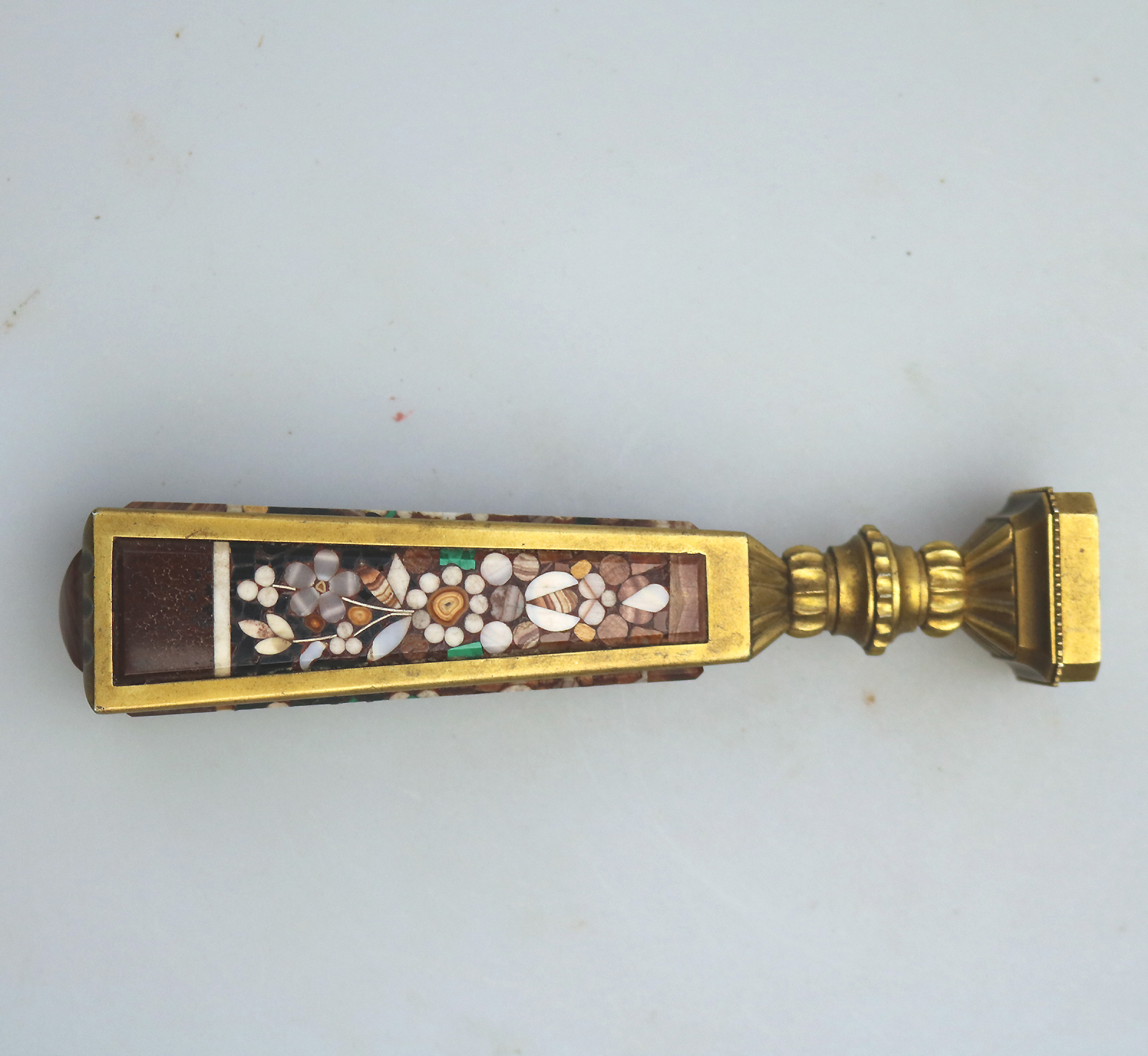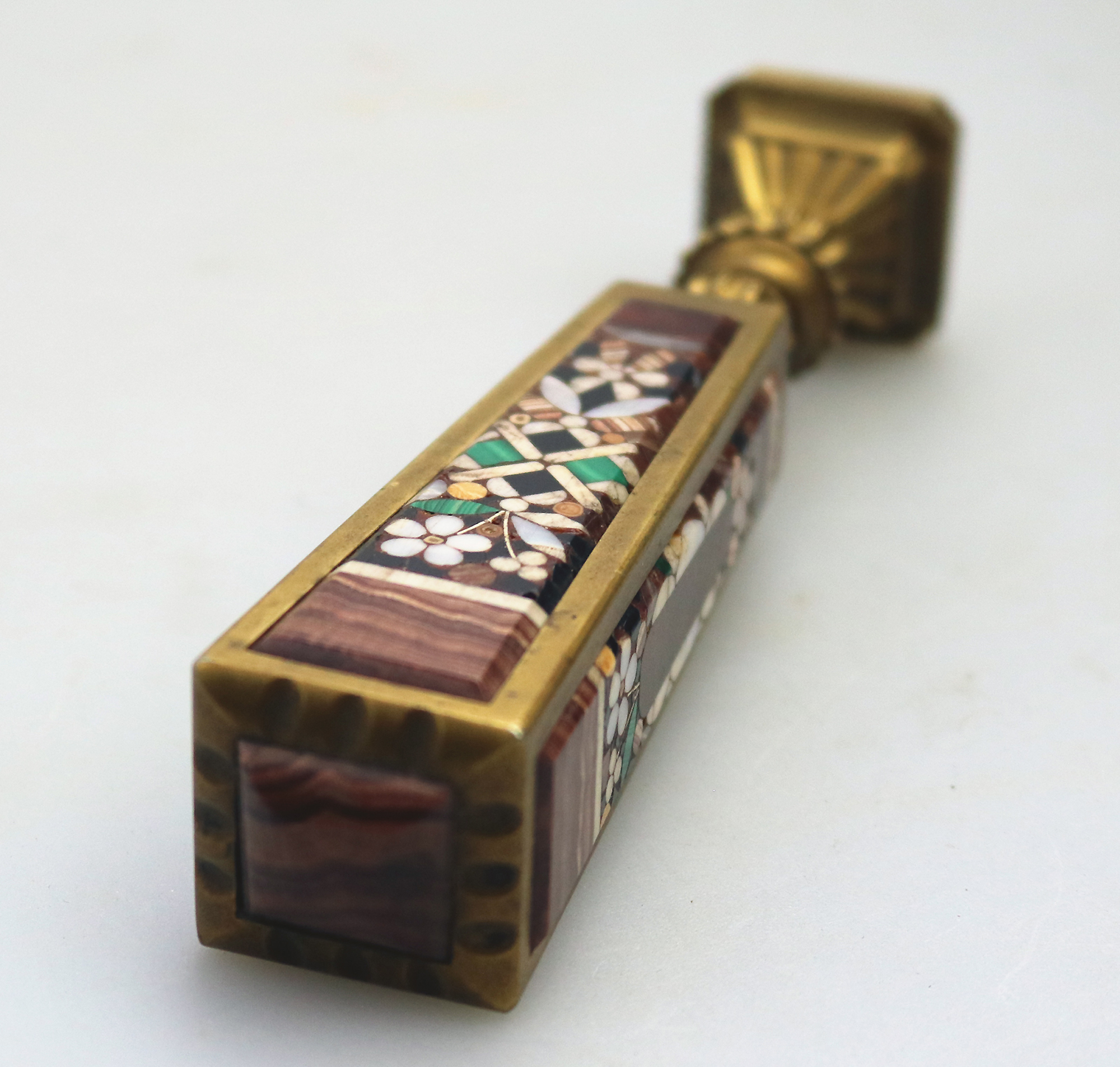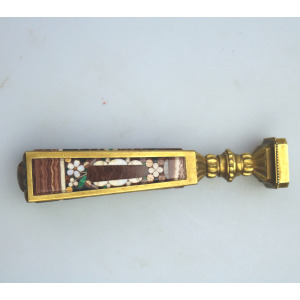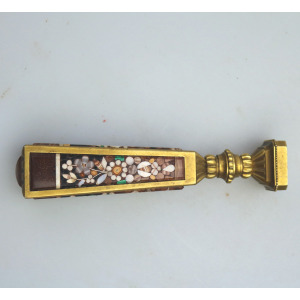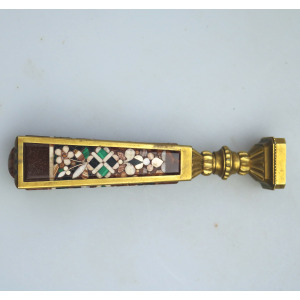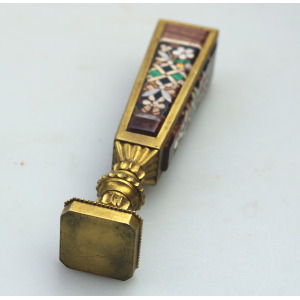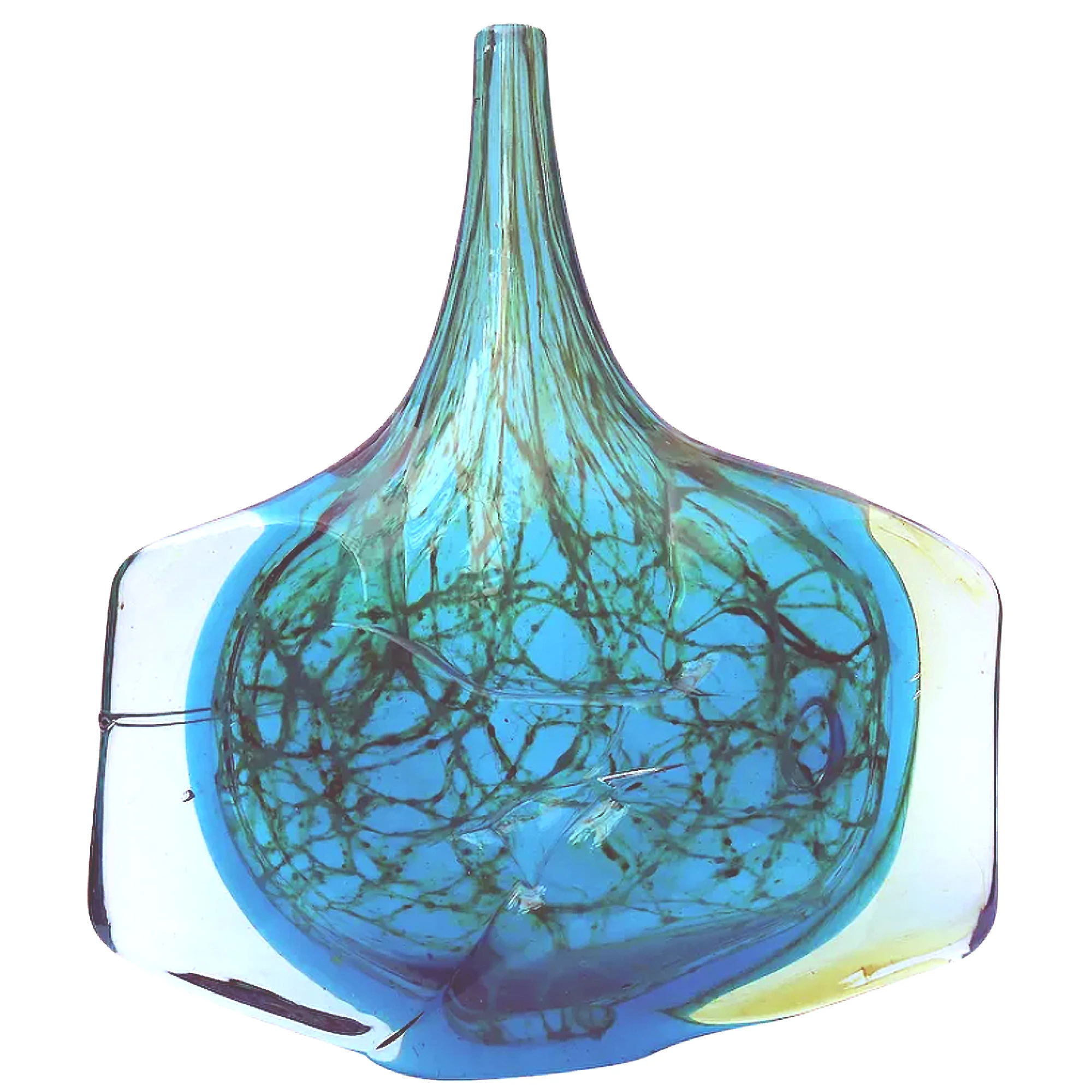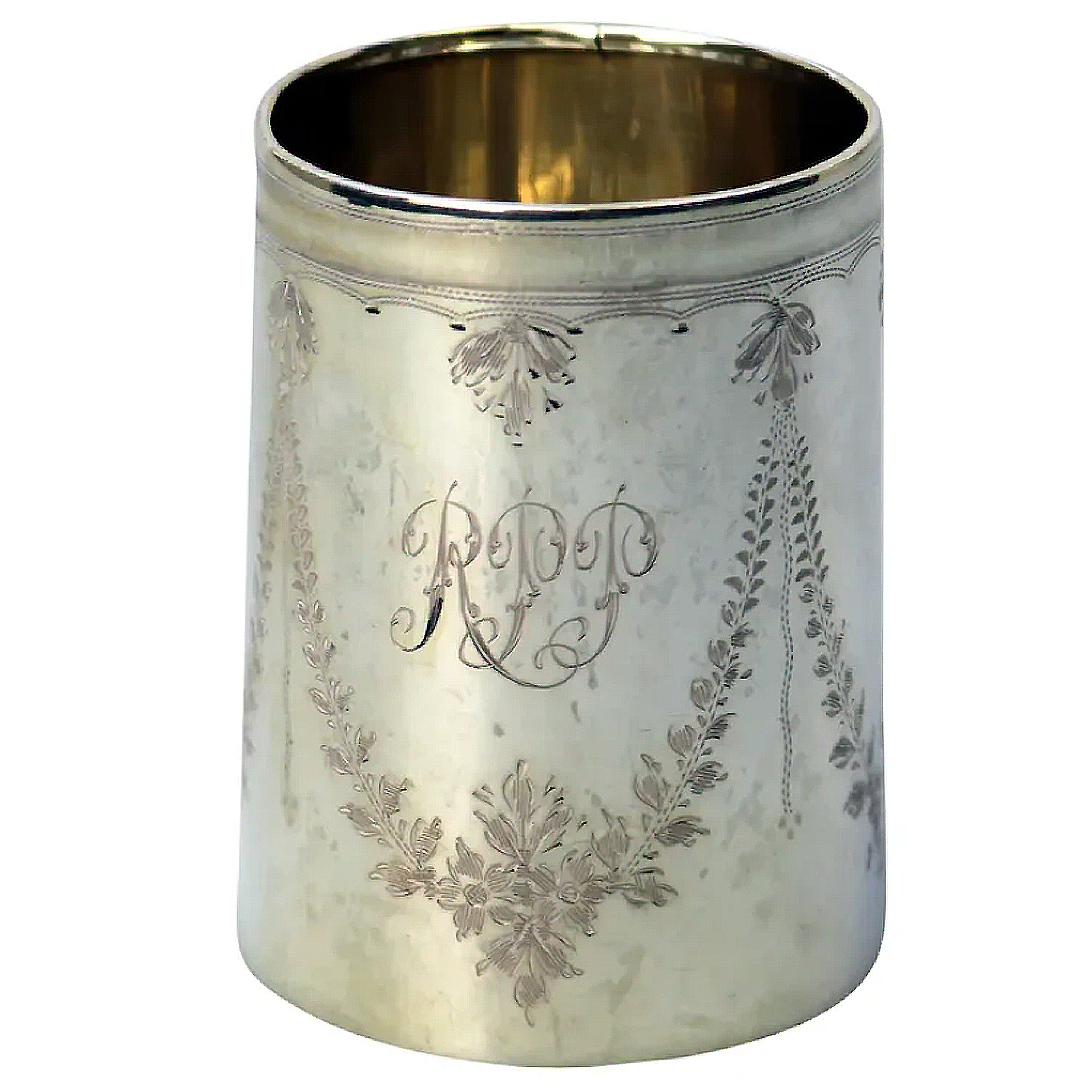Follow Hunt Vintage
An extremely rare & fine, substantial antique inlaid hardstone Desk Seal C.19thC
Delivering from: London, United Kingdom (UK)
£715
- Tree planted with your order
- Secure Payment
- Excellent customer service
- Buyer Protection
- 14-day return guarantee
An extremely rare and fine, substantial antique gilt bronze Wax Desk Seal of grand proportions profusely inlaid with hardstones (numerous hardstone, including notably what looks like malachite, tiger eye etc…etc…) floral panels on gilt mount – one side with a vacant panel and having no matrix – an impressive and exceptional item – if Italian then a Grand Tour piece, if French then probably from the Palais Royal district. An extremely rare and very fine Wax Seal.
Circa 19th century
Good Antique Condition – a very fine item
5 inches (12.8cm) length approx
Safe UK shipping is included in the price, and international shipping is at cost.
Please check out our listings for rare, novelty and quality antiques and collectibles.
Palais Royal is a term given to an area in Paris around the Royal Palace that specialised in producing small elaborate works of art during the 18th and 19th centuries.
The Grand Tour was the principally 17th- to early 19th-century custom of a traditional trip through Europe, with Italy as a key destination, undertaken by upper-class young European men of sufficient means and rank (typically accompanied by a tutor or family member) when they had come of age (about 21 years old). The custom—which flourished from about 1660 until the advent of large-scale rail transport in the 1840s and was associated with a standard itinerary—served as an educational rite of passage. Though it was primarily associated with the British nobility and wealthy landed gentry, similar trips were made by wealthy young men of other Protestant Northern European nations, and, from the second half of the 18th century, by some South and North Americans.
By the mid-18th century, the Grand Tour had become a regular feature of aristocratic education in Central Europe as well, although it was restricted to the higher nobility. The tradition declined in Europe as enthusiasm for classical culture waned, and with the advent of accessible rail and steamship travel—an era in which Thomas Cook made the “Cook’s Tour” of early mass tourism a byword starting in the 1870s. However, with the rise of industrialization in the United States in the 19th century, American Gilded Age nouveau riche adopted the Grand Tour for both sexes and among those of more advanced years as a means of gaining both exposure and association with the sophistication of Europe. Even those of lesser means sought to mimic the pilgrimage, as satirized in Mark Twain’s enormously popular Innocents Abroad in 1869.
The primary value of the Grand Tour lay in its exposure to the cultural legacy of classical antiquity and the Renaissance, and to the aristocratic and fashionably polite society of the European continent. It also provided the only opportunity to view specific works of art, and possibly the only chance to hear certain music. A Grand Tour could last anywhere from several months to several years. It was commonly undertaken in the company of a cicerone, a knowledgeable guide or tutor.
| City | |
|---|---|
| Item Location | |
| Material | |
| Delivery | |
| Period | |
| Style |
Shipping Policy
We ship most things within 24 hours, packaging everything safely. We use tracked and signed for services. Expensive items are shipped using FedEx/UPS/similar.
For any enquiries or quotes please contact us using the 'Ask Seller' from below.

